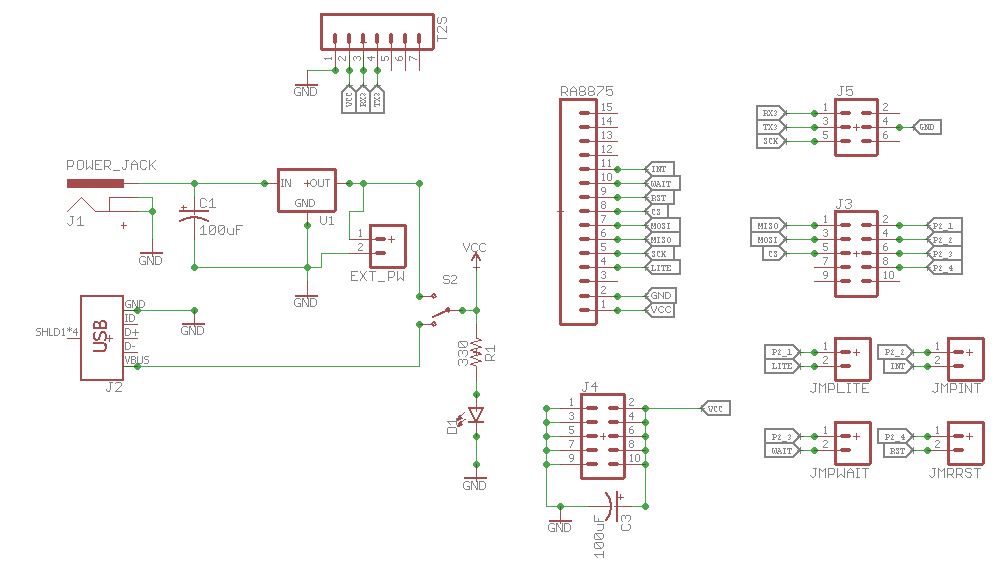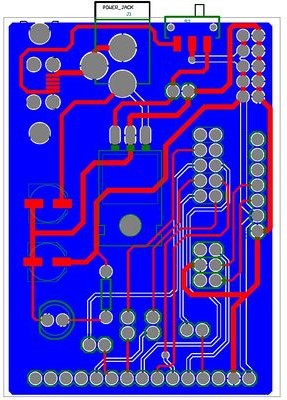Difference between revisions of "S17: Interactive Snake and ladder"
Proj user2 (talk | contribs) (→Abstract) |
Proj user2 (talk | contribs) (→Objectives & Introduction) |
||
| Line 6: | Line 6: | ||
== Objectives & Introduction == | == Objectives & Introduction == | ||
| − | |||
| − | |||
| − | |||
| − | |||
| − | * | + | This game aims to change the way people think of traditional snake game. It will offer the experience of commercial multilayer games to the player retaining the simplicity of traditional snake game. |
| − | ** | + | *The major objectives of this project are: |
| − | + | ** To create a snake and ladder game that will have all the functionality of traditional snake and ladder games. | |
| − | ** | + | ** Introduce multiplayer functionality in the game that will allow several players to play a game simultaneously. It should be able to give the experience of a real time multiplayer game to the players. |
| − | ** | + | **To introduce Speech output for events. |
| + | |||
===Roles & Responsibilities=== | ===Roles & Responsibilities=== | ||
Revision as of 01:45, 12 May 2017
Contents
Project Title
Snake and Ladder
Abstract
This project aims to bring the fun and simplicity of snake and ladder game with some new features. It is a snake and ladder game using SJONE board, LCD and 2 wireless remotes. LCD display is connected to the SJONE board will display the game grid. It will also have the multiplayer feature that will allow more than one players to play the game using wireless remotes simultaneously. This project explores a new dimension in the traditional snake game to make it more interesting and challenging.
Objectives & Introduction
This game aims to change the way people think of traditional snake game. It will offer the experience of commercial multilayer games to the player retaining the simplicity of traditional snake game.
- The major objectives of this project are:
- To create a snake and ladder game that will have all the functionality of traditional snake and ladder games.
- Introduce multiplayer functionality in the game that will allow several players to play a game simultaneously. It should be able to give the experience of a real time multiplayer game to the players.
- To introduce Speech output for events.
Roles & Responsibilities
- Hardware and PCB designing
- Speech Module Interface and Algorithm
- LCD Interface and Game board Algorithm
- Wireless Communication
Schedule
| Week | Start Date | End Date | Task | Status | Actual Completion Date |
|---|---|---|---|---|---|
| 1 | 3/21 | 3/25 |
|
Complete | 3/25 |
| 2 | 3/25 | 3/29 |
|
Complete | 3/29 |
| 3 | 3/29 | 4/9 |
|
Complete | 4/10 |
| 4 | 3/29 | 4/8 |
|
Complete | 4/8 |
| 5 | 3/30 | 4/14 |
|
Complete | 4/14 |
| 6 | 4/11 | 4/20 |
|
Complete | 4/20 |
| 7 | 4/20 | 4/22 |
|
Complete | 4/22 |
| 8 | 4/23 | 4/31 |
|
Complete | 4/31 |
| 9 | 4/26 | 5/5 |
|
Complete | 5/5 |
| 10 | 5/5 | 5/14 |
|
In Progress | |
| 11 | 5/15 | 5/23 |
|
Plan |
Parts List & Cost
Give a simple list of the cost of your project broken down by components. Do not write long stories here.
Design & Implementation
Overall System
Hardware Design
Schematic Diagram
Below is the schematic diagram for the project. It includes the power supply, interface for LCD controller and text to speech module.

PCB Layout
Below is the PCB layout developed using Eagle PCB and Altium designer.
Hardware Interface
In this section, you can describe how your hardware communicates, such as which BUSes used. You can discuss your driver implementation here, such that the Software Design section is isolated to talk about high level workings rather than inner working of your project.
Software Design
Show your software design. For example, if you are designing an MP3 Player, show the tasks that you are using, and what they are doing at a high level. Do not show the details of the code. For example, do not show exact code, but you may show psuedocode and fragments of code. Keep in mind that you are showing DESIGN of your software, not the inner workings of it.
Implementation
This section includes implementation, but again, not the details, just the high level. For example, you can list the steps it takes to communicate over a sensor, or the steps needed to write a page of memory onto SPI Flash. You can include sub-sections for each of your component implementation.
Testing & Technical Challenges
Describe the challenges of your project. What advise would you give yourself or someone else if your project can be started from scratch again? Make a smooth transition to testing section and described what it took to test your project.
Include sub-sections that list out a problem and solution, such as:
My Issue #1
Discuss the issue and resolution.
Conclusion
Conclude your project here. You can recap your testing and problems. You should address the "so what" part here to indicate what you ultimately learnt from this project. How has this project increased your knowledge?
Project Video
Upload a video of your project and post the link here.
Project Source Code
References
Acknowledgement
Any acknowledgement that you may wish to provide can be included here.
References Used
List any references used in project.
Appendix
You can list the references you used.
